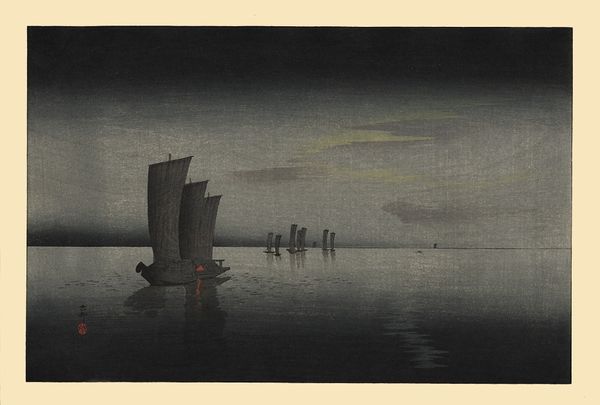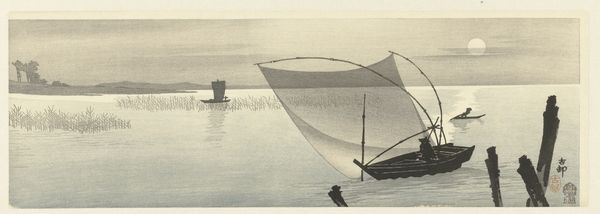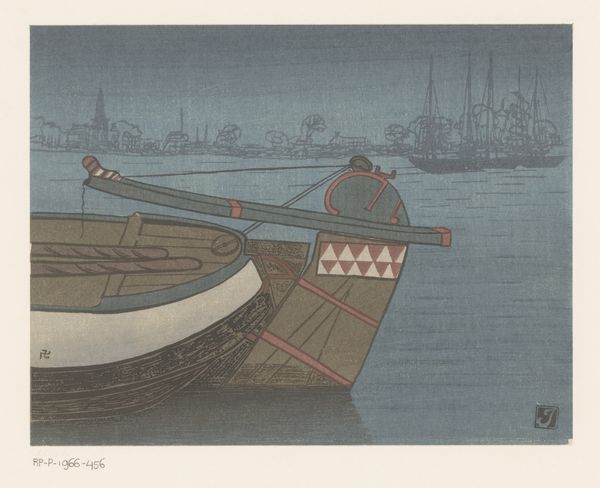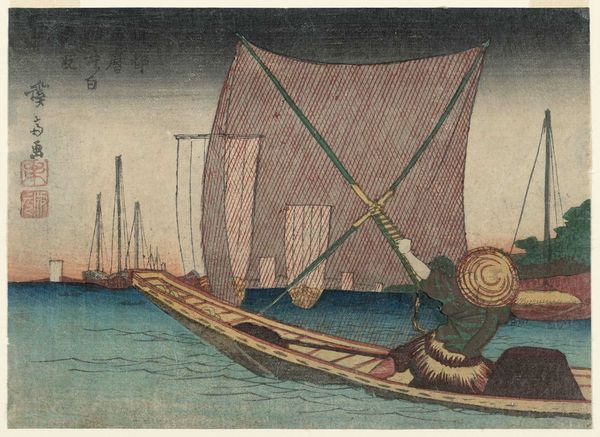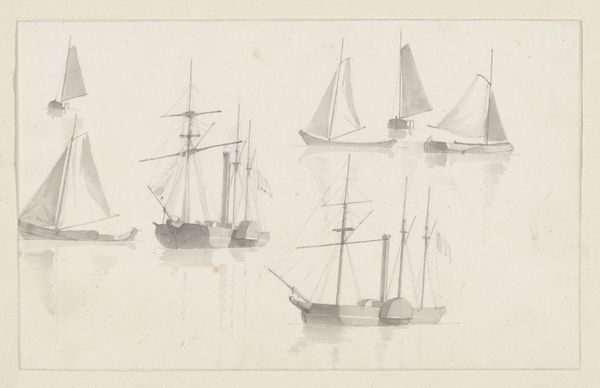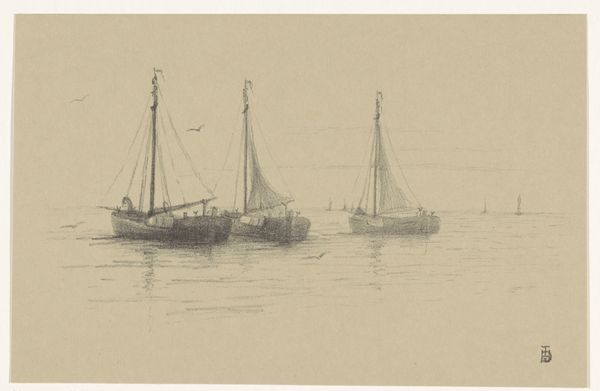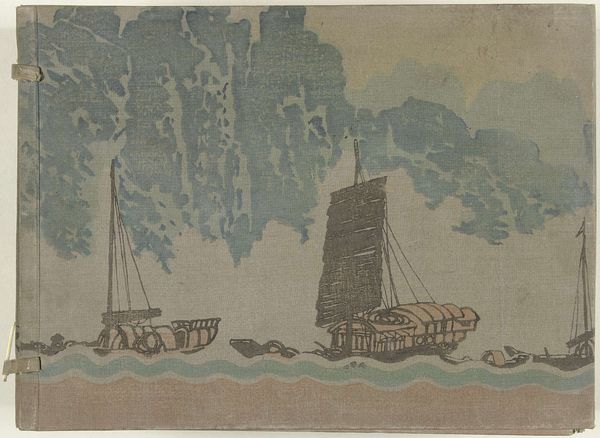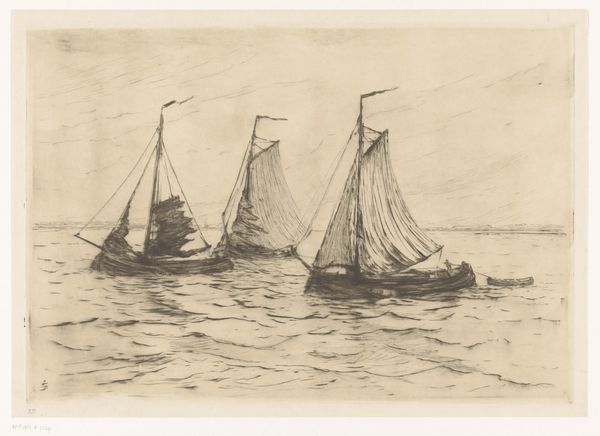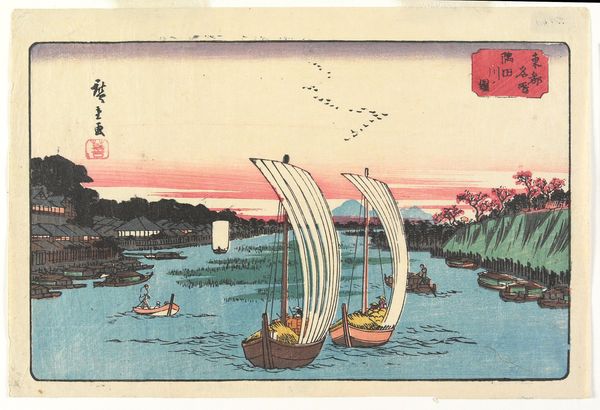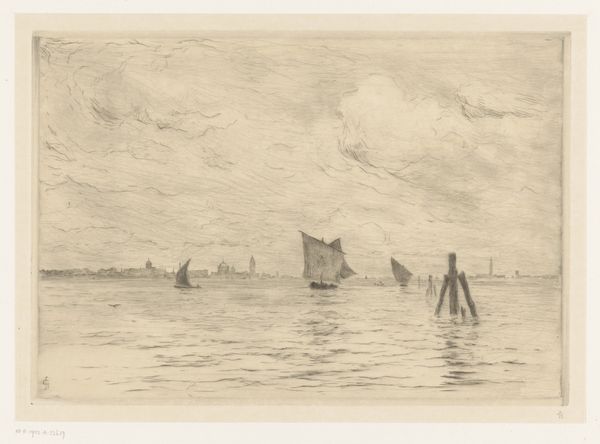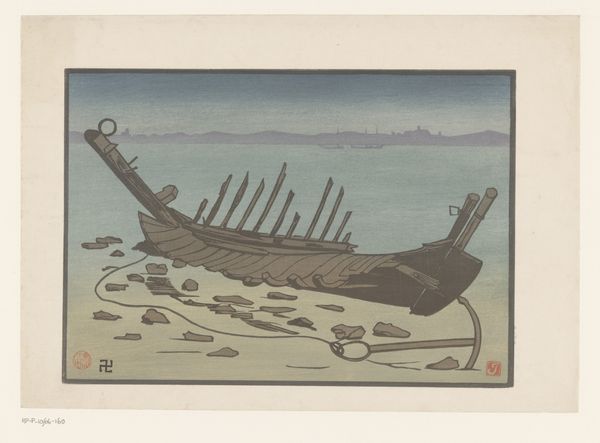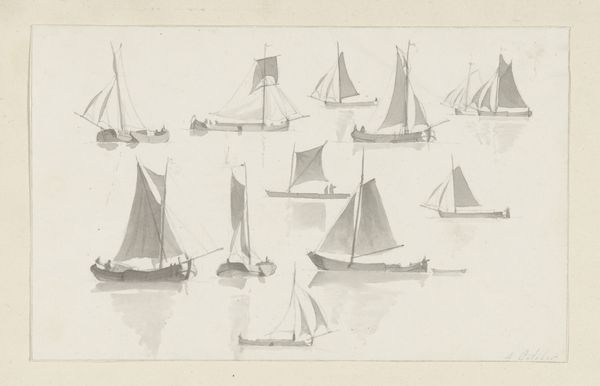
Dimensions: height 207 mm, width 252 mm
Copyright: Rijks Museum: Open Domain
Curator: Here we have Ohara Koson’s "Vissersboten," a woodblock print from sometime between 1900 and 1936, currently residing in the Rijksmuseum. It depicts several fishing boats silhouetted against a hazy sky and sea. Editor: It’s quite muted, isn’t it? A dreamy scene. The repetitive vertical lines of the masts and reeds create a calming, almost hypnotic effect. I immediately think of quiet mornings and the routines of maritime labor. Curator: Exactly, the artist's use of the ukiyo-e tradition, emphasizes not just aesthetic beauty, but also the lives of commoners, in this instance, fishermen. Considering it's a print, the level of detail on those boats is astonishing; you can almost feel the texture of the sails. Editor: I'm struck by the sails themselves. They dominate the composition. Dark and looming, they seem to symbolize more than just the tools of labor; they evoke a sense of the unknown, the ever-present danger of the sea, and the constant reliance on natural forces. Curator: Ukiyo-e prints were not created by a single artisan, but by the cooperation of a designer, carver, printer, and publisher, a true testament to collaborative work. I’m also interested in the context; during this period, Japan was rapidly industrializing, yet here is a focus on the traditional trades and ways of living being disrupted by the advent of more industrialized methods. Editor: I hadn't considered that. Perhaps the hazy quality further reinforces this sense of the fleeting nature of a particular historical moment, the melancholic beauty of a world on the cusp of transformation. Curator: Absolutely. The reflection of light on the water could symbolize hope, or the reflection could also represent illusion. Editor: An interesting blend of concrete detail and symbolic weight, expertly achieved through the woodblock medium. I found a story here that engages both with tangible working conditions of a traditional industry, and the broader psychological themes of the sea, history, and memory. Curator: Indeed, this work exemplifies the importance of acknowledging the intersection of both tangible means of material and labor and cultural context.
Comments
No comments
Be the first to comment and join the conversation on the ultimate creative platform.
